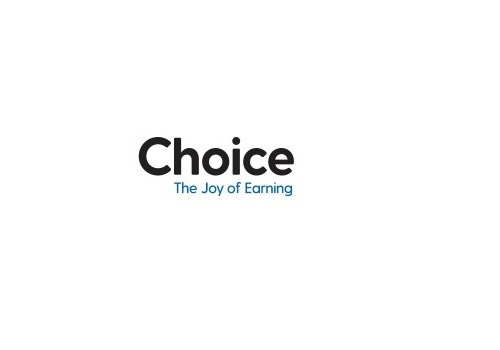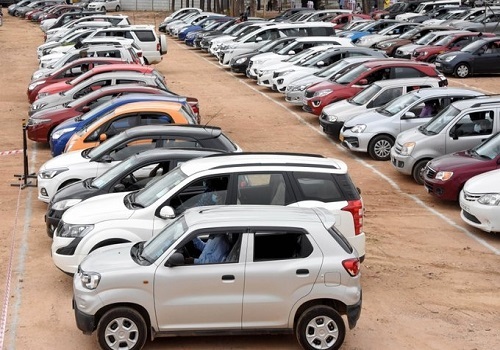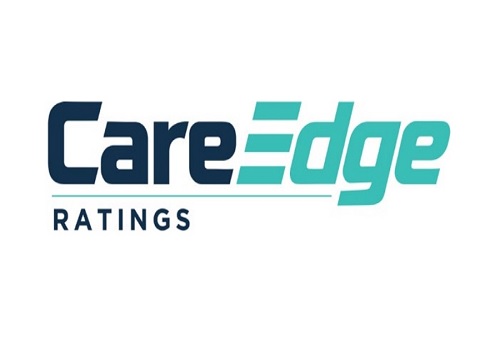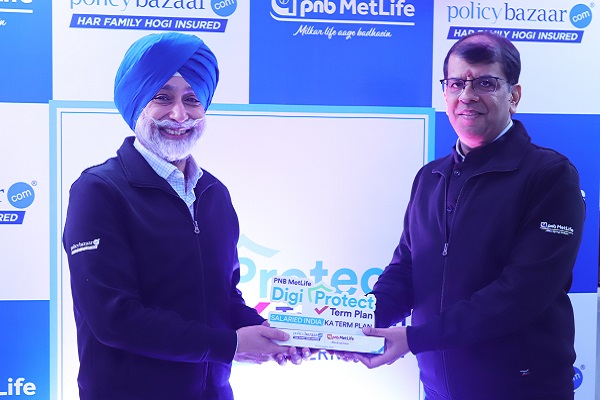Indian General Insurance Sector Update : GST 2.0: New wheels to drive motor insurance growth by Motilal Oswal Financial Services Ltd

GST 2.0: New wheels to drive motor insurance growth
* GST rate cuts, coupled with improving rural sentiment and easing financing costs, have started to revive automobile demand after a prolonged slowdown. The sustained recovery in vehicle sales should gradually expand the addressable market for motor insurers.
* With lower vehicle prices leading to reduced insured declared values (IDV), owndamage premiums have softened marginally, enhancing affordability for buyers. While this could limit near-term premiums per policy, the medium-term impact remains positive as penetration continues to rise.
* A uniform GST on automobile components is expected to ease repair and replacement costs, reducing claim severity in the own-damage segment. If pricing discipline is maintained, this should support a gradual improvement in industry loss ratios over FY26-27.
* Public sector insurers have been aggressive on pricing, resulting in slower growth for private players and pressure on industry profitability. However, elevated motor combined ratios for PSUs (130-150% over the last five quarters) highlight the unsustainable nature of current discounts, and pricing discipline is expected to gradually return, benefiting private insurers with stronger underwriting track records (110-120% motor combined ratio for private insurers over the last five quarters).
* With claims severity easing, loss ratios moderating, and volume recovery in sight, motor insurers’ combined ratios are likely to trend lower. This also supports stronger profitability, particularly for efficient private players like ICICI Lombard (ICICIGI).
* ICICIGI has maintained leadership in both OD and TP segments despite subdued growth amid heightened competition. Its prudent underwriting and strong distribution franchise position it well to capitalize on improving auto sales and a likely shift toward more sustainable pricing in the motor segment. We reiterate our BUY rating with a one-year TP of INR2,300 (premised on 30x Sep’27E EPS)..
Revival of automobile sales to be the key tailwind
* As highlighted by our auto sector analyst in a recent sector update (Back in the reckoning), the GST Council’s decision to reduce GST rates has provided a muchneeded boost to the auto sector. Along with other tailwinds, such as a normal monsoon supporting rural sentiment, ~100bp reduction in interest rate in YTDCY25, and income tax benefits, are expected to revive demand from this festive season.
* The Sep’25 auto monthly numbers appeared encouraging, with companies reporting a surge in customer footfalls, bookings, enquiries, and deliveries following the GST rate cuts. According to the Federation of Automobile Dealers Association (FADA), while the first 21 days of Sep’25 were muted, there was a surge in demand post 22nd Sep’25, backed by GST 2.0 and the festive season. Overall retail volumes grew 34% YoY (2W up 36% YoY and PV up 35% YoY).
* Digital platforms like CarWale and BikeWale reported 66% YoY growth in traffic during Navratri 2025, underscoring the continued momentum of festive demand and the positive impact of the GST rate reduction on the automobile sector.
* The growth of motor insurance premiums has declined to single digits over the past few months due to: 1) low automobile sales and 2) stagnant motor TP prices. The pick-up in sales directly expands the TAM for motor insurance. Additionally, an increase in vehicle ownership enhances the renewal pool for future years, supporting sustained premium growth. The improvement in vehicle sales is, thus, expected to drive a healthy increase in overall GWP of the motor insurance segment.
* With vehicle prices declining following the GST reduction, IDV has also fallen, impacting motor OD premiums. Since premiums are linked to IDV, a lower IDV improves affordability for new buyers, encouraging higher insurance penetration. While this may slightly reduce per-policy premium values, the affordability-led expansion in customer base is likely to offset the decline.
* On the other hand, the trend of premiumization in vehicle purchases, supported by improved affordability, is expected to help offset the impact of lower IDV to a certain extent
Pricing play in motor OD at the cost of profitability; motor TP rates stagnant
* The motor OD segment has faced intense competition, with several players, especially public insurers, offering discounts to capture market share. This price discounting, coupled with weaker automobile sales, led to a slowdown in motor OD premium growth, from 17% YoY in FY24 to 8% YoY in FY25 and 5% YoY in YTDFY26.
* PSUs have been aggressive on pricing, offering insurance at lower prices compared to private peers across various IDV cohorts.
* In the motor OD segment, the industry combined ratio has ranged between 130% and 140% over the last five quarters, while PSUs have recorded combined ratios of above 140%, highlighting the impact on profitability due to aggressive discounting. On the other hand, the combined ratio for key private players has been below 130%.
* Motor TP prices are regulated by the government and have not seen a hike since 2018, despite inflation and rising claim costs, which have constrained the profitability of this segment. As a result, motor TP premium growth has remained stagnant below 10% for FY25/YTDFY26, with key players experiencing elevated combined ratios. Implementing a price hike remains a crucial lever for growth as well as profitability in the motor TP segment.
* Key private players are focused on profitability in the motor TP segment, maintaining combined ratios in the 110-115% range, whereas PSUs continue to record ratios above 130%.
Impact on claims severity and loss ratio
* Uniform GST rate of 18% on automobile spare parts directly reduces the acquisition cost for workshops and insurers who maintain their own repair networks. This, in turn, reduces the overall repair cost per claim.
* A lower ex-showroom cost due to GST cuts also reduces the IDV of vehicles. Thus, in cases of total loss or major damage, where the vehicle is written off or requires extensive repairs, the payout base is lower. This helps reduce claim severity from the insurer’s perspective.
* A lower IDV, coupled with slightly cheaper parts, can reduce OD loss costs per policy, although a rising number of vehicles on the road may lift claims frequency over time. We expect the overall impact on loss and combined ratios to remain favorable, provided pricing discipline is maintained.
Opportunity for improvement in financial performance
* The GST rationalization for automobiles is set to boost both growth and profitability for general insurers, particularly those with a strong presence in the motor segment. As motor insurance contributes around 30-35% of industry GWP, any improvement in auto sales and claim dynamics has a significant bearing on overall financials.
* From a growth perspective, lower tax incidence on vehicles, driving higher sales, is expected to translate into stronger GWP growth in the coming quarters. The immediate benefit will stem from higher new vehicle registrations, especially in mass-market passenger cars and two-wheelers, which form the backbone of motor insurance volumes.
* On the profitability front, lower GST on automobile parts should reduce claims severity, as spare part costs form a major component of claim payouts. This moderation in claims cost, coupled with higher premium inflows, will support a decline in motor loss ratios and an improvement in underwriting margins.
ICICIGI: Reiterate BUY; Strong positioning to capitalize on the motor insurance growth opportunity
* ICICIGI is the largest insurer in the motor segment, holding a market share of 10.4% in YTDFY26, with motor OD market share at 13.1% (the largest player in the industry) and motor TP market share of 8.5% (the largest private insurer).
* ICICIGI reported a modest 3% YoY growth in the motor OD segment for YTDFY26, trailing the industry. The muted performance was driven by a temporary slowdown in automobile sales and heightened price competition, particularly from PSUs. Nonetheless, ICICIGI continues to retain its leadership position. With automobile sales expected to recover and pricing discipline likely to return as combined ratios remain elevated across the industry, we anticipate a gradual improvement in premium growth over the coming quarters.
* The insurer reported 2% YoY premium growth in the motor TP segment in YTDFY26, compared to 9% YoY growth for the industry, reflecting a prudent approach amid subdued profitability in the segment. However, in the event of a motor TP rate hike, the company is well-positioned to leverage its strong distribution network and capture incremental market share once pricing turns more favorable.
* We expect premiums in the motor OD segment to post a 12% CAGR over FY25- 28, while the motor TP segment is expected to clock an 8% CAGR. Loss ratio is expected to be ~66%, leading to a combined ratio of ~105% in FY28.
* Apart from growing traction in retail health, we expect some semblance in group health pricing, which will support group health profitability. The company maintains a dominant position in the fire segment, and the growth trajectory is expected to be consistent post price correction.
* We reiterate our BUY rating with a one-year TP of INR2,300 (premised on 32x Sep’27E EPS).
For More Research Reports : Click Here
For More Motilal Oswal Securities Ltd Disclaimer
http://www.motilaloswal.com/MOSLdisclaimer/disclaimer.html
SEBI Registration number is INH000000412










More News

Tube and Pipes Sector Update : Capturing new opportunities! by Motilal Oswal Financial Servi...














